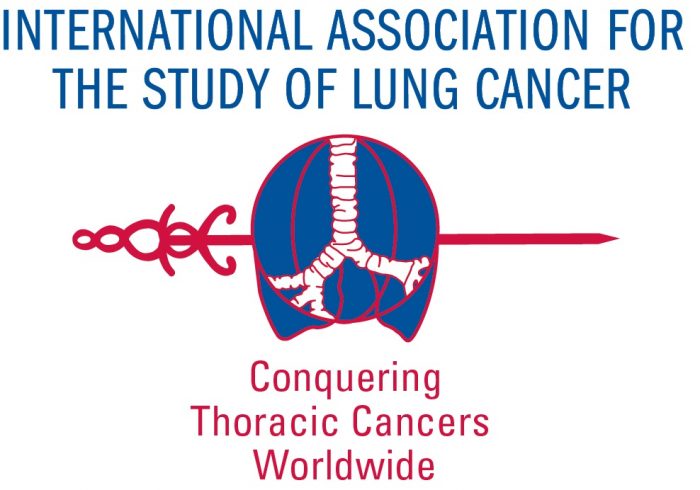Matthew Stein, MD (Hematology/Oncology) Presenting at: IASLC (Int’l Assoc. for the Study of Lung Cancer) Yokohama, Japan-October 16, 2017
Abstract 10429
JAK Pseudokinase Domain Variants Highlight nRTK nsSNPs Identified with Next-Generation Sequencing in NSCLC Patients
Type: Peer Review Topic: 02. Biology/Pathology
Authors: Matthew K. Stein, Lindsay K. Morris, Mike G. Martin; West Cancer Center, University of Tennessee Health Science Center, Memphis/United States of America
Background
Non-receptor tyrosine kinase (nRTK) pathways are aberrantly activated in cancer, and mutations in nRTKs have potential therapeutic and prognostic importance. Tumor profiling with next-generation sequencing (NGS)enables a gene’s entire coding sequence to be evaluated, facilitating the identification of novel non-synonymous single nucleotide polymorphisms (nsSNPs) in nRTKs.
Method
We searched nsSNPs in 14 nRTKs in the tumors of advanced NSCLC patients (pts) at our institution that received NGS with Caris from 2013-2015. All mutations test-defined as pathogenic (PATH) or nsSNPs labelled variants of undetermined significance (VUS) were included. To classify VUS, nsSNPs underwent PolyPhen-2’s in silico analysis to predict pathogenicity. Any VUS predicted-damaging with PolyPhen-2 we denote pnsSNP. nsSNPs were then classified as occurring within or outside of the tyrosine kinase domain (TKD); JAK1-3 pseudokinase domain (PSKD) lesions were also described.
Result
157 NSCLC pts were identified with median age 65 (range 26-85); 51% were male; 65%
Caucasian, 35% African-American. 98 nRTK variants were found (93 nsSNPs and 5 PATHs). 5/5 PATHS were PIK3CA. 31/93 (33%) nsSNPs were pnsSNPs and spread among 30 pts. pnsSNPs were found in 12/14 nRTKs with median 2 (range 0-6). The most frequent were JAK3 (6/20 nsSNPs were pnsSNPs), BTK (5/8), ABL1 (3/12), JAK2 (3/11), CDK12 (3/9) and
JAK1 (3/3). 66% were extra-TKD (28% were pnsSNP), 23% TKD-restricted (44%) and 11% PSKD of JAK1-3 (100%). There were 6 N-lobe PSKD, 3 C-lobe PSKD and 1 C-lobe TKD JAK1-3 pnsSNPs (Table 1) at PSKD-TKD contact sites known to harbor the majority of activating JAK mutations. 6/12 JAK pnsSNPs were in pts whose tumors were EGFR-/KRAS-/ALK-/ROS-
/PDL1-.
Table 1: JAK1-3 pnsSNPs in NSCLC patients.
|
JAK |
VUS; allele frequency |
Location |
Accession Number; Minor allele frequency
(ExAC) |
Histology |
Age, race, gender |
Genomics (EGFR, KRAS, ALK or ROS1-
rearranged, PDL1 (%)) |
|
JAK1 |
D660N;
66% |
PSKD;
N-lobe |
rs368904859; T=2.0e-5 | Adeno- carcinoma | 66, C, M |
Negative |
| P674S;
9% |
PSKD;
N-lobe |
None |
Squamous |
76, C, M |
PDL1+ (5%) |
|
| D739N;
47% |
PSKD;
N-lobe |
rs759709239;
T=3.3e-5 |
Large cell | 43, C,
M |
KRAS+ | |
| JAK2 | E621D;
30% |
PSKD;
N-lobe |
None | Unspecified | 65,
AA, M |
Negative |
| D686H;
13% |
PSKD;
N-lobe |
None | Adeno-
carcinoma |
55, C,
M |
Negative | |
| C1105F;
41% |
TKD;
C-lobe |
None | Adeno-
carcinoma |
73, C,
F |
KRAS+, ROS1-
rearranged |
|
| JAK3 | V55E; 13% | FERM | None | Adeno- carcinoma | 74, C, F | Negative |
| Y105H;
21% |
FERM | None | Squamous | 68, C,
F |
PDL1+ (20%) | |
| R537Q;
47% |
PSKD;
N-lobe |
rs587778413;
T=4.1e-5 |
Adeno-
carcinoma |
60, C,
F |
PDL1+ (65%) | |
| L702P;
53% |
PSKD;
C-lobe |
rs772117537;
G=1.7e-5 |
Squamous | 80, C,
M |
Negative | |
| P745L;
50% |
PSKD;
C-lobe |
rs776106625;
A=8.3e-6 |
Adeno-
carcinoma |
68, C,
M |
EGFR+
(E746_A750del) |
|
| L788I; 7% | PSKD;
C-lobe |
None | Squamous | 68,
AA, M |
Negative |
Conclusion
>19% NSCLC pts held a pnsSNP with 77% occurring outside of the TKD-proper. The majority of JAK1-3 pnsSNPs localized to the PSKD; their frequency and functional impact should be examined on a larger scale.

